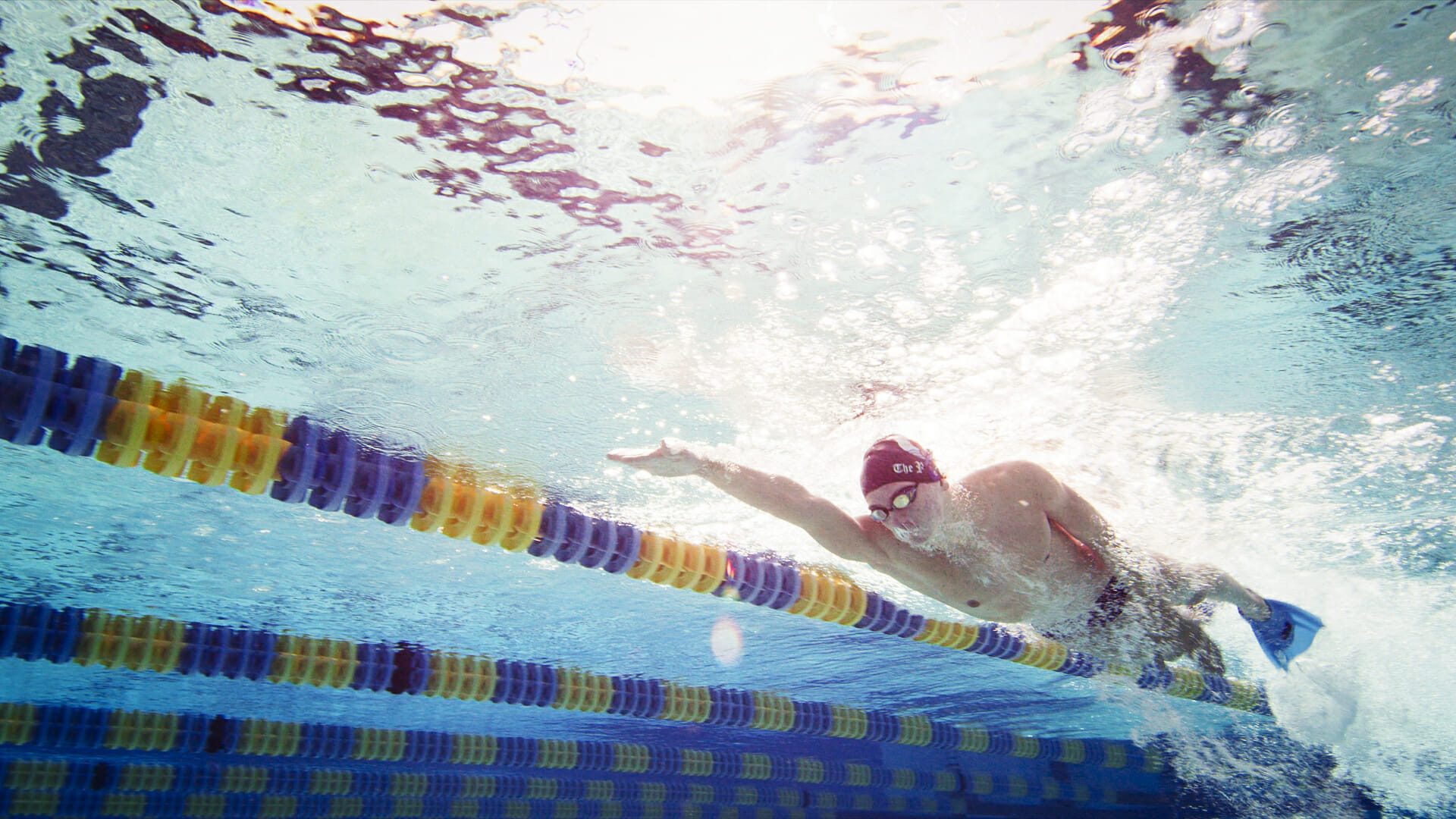The Three Styles of Freestyle
Hybrid Technique
With hybrid freestyle technique, the stroke rates range from around 70 to nearly 100 strokes per minute, overlapping some with the other two techniques. With the stroke rates in between the other two techniques, hybrid freestyle is a technique that also seems to work best for the middle-distance races, 100 and 200 meters. We often see hybrid freestyle technique also being used in longer events, 400 meters and up, particularly among men.
The key feature of hybrid freestyle technique is the different speeds of the recovering arms. Coming off the breath side, the recovering arm comes down harder and faster than on the non-breath side. After the breath, the head should submerge when the recovering arm strikes the water. Once in the water, the recovering arm on the breath side pushes out the front, similar to a hip-driven technique. The hand on the non-breath side will begin to press downward immediately after entry, similar to a shoulder-driven technique, to help facilitate the breath to the other side. Since each arm borrows a technique from both hip-driven and shoulder-driven freestyle, we call it a hybrid freestyle technique. It is also known as a loping or galloping freestyle technique.
Under water, since the recovering arm strikes the water earlier on the breath side, the opposite pulling arm is usually in the front quadrant. By the time the non-breathing side hand strikes the water, the opposite pulling hand is in the back quadrant.
American record holder, Zane Grothe, uses hybrid freestyle technique. Coming off the breath to the right side, his left pulling hand is in the front quadrant. Notice the peak acceleration point (center in graph below) as his right hand strikes the water, coming off quick body rotation, arm recovery and a strong surge kick
As Zane begins to rotate to the right for his breath, his left arm strikes the water at entry. Now the right pulling hand is well into the back quadrant. His acceleration from this motion is not as great as above, but his resultant velocity is just as high because of less frontal drag at this moment.
As with hip-driven technique, hybrid freestyle works much better with a strong kick. The rationale for using this technique is to come off of the breath side with as much energy as possible from the head rotation, shoulder rotation, and fast hand/arm entry, coupled with a pull and a strong down kick. After the breath, the head buries under water and the hand is held out front to help lower the drag coefficient as much as possible. The swimmer should then accelerate and surge forward.
In summary, in choosing the right freestyle technique, several factors come into consideration. If it is a sprint freestyle technique the swimmer is looking for, there is only one good option, shoulder-driven freestyle.
In the middle-distance events of 100 and 200 meters, a swimmer may be better served with either a shoulder driven or hybrid freestyle, depending on the amount of kicking propulsion.
In the events of 400 meters or longer, a swimmer has all three options. Hip-driven and hybrid freestyles are always better with a strong kick, but depending on the level of training, hip-driven freestyle may be the most energy-conserving technique.
The best way to know which freestyle technique to use is to learn all three techniques and then test them. The test includes both the times achieved with each technique and the amount of energy required to reach those times. Further testing, such as with the Velocity Meter and Pressure Meter, helps us understand more details about each freestyle technique. At The Race Club, we help all swimmers determine which technique works the best for them for all of the freestyle events.
Yours in Swimming,
Gary Sr.


In 100M races, I see many male swimmers using this technique, but I rarely see women using it.
Few women use either a hybrid or hip-driven freestyle technique. Nearly all use shoulder driven with higher stroke rate. To use the former, a strong kick is required.